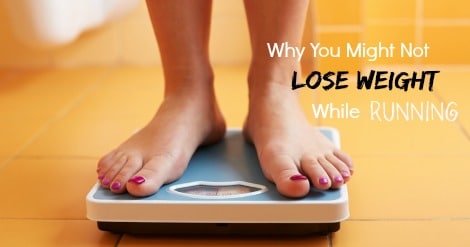Understanding the Weight Loss Process
Embarking on a weight loss journey while maintaining a running routine can be a challenging endeavor, particularly when progress stalls. The fundamental principle behind weight loss is the creation of a caloric deficit, which occurs when an individual burns more calories than they consume. Running contributes to this deficit by increasing caloric expenditure, but it is essential to recognize that exercise alone may not suffice for weight loss. This is where the concept of “running but not losing weight” emerges.
Weight loss progress can be influenced by various factors, including metabolism, hormonal balance, and lifestyle habits. A common challenge faced by runners is hitting a weight loss plateau, where the body adapts to increased physical activity and reduces the rate at which it burns calories. Understanding these dynamics is crucial for overcoming obstacles and achieving weight loss goals.
Common Reasons for Not Losing Weight While Running
Achieving a successful weight loss journey while running requires a multifaceted approach, as several factors can contribute to the paradox of “running but not losing weight.” First, it is essential to recognize that caloric expenditure during running might not be as high as one assumes. Overestimating the number of calories burned during a run can lead to overeating and hinder weight loss progress.
Another common pitfall is underestimating caloric intake. It is easy to overlook the calories consumed, especially when relying on estimates or assuming that healthy foods contain fewer calories than they do. Accurately tracking caloric intake and expenditure is crucial for maintaining a caloric deficit and promoting weight loss.
Lastly, focusing solely on cardio exercises, such as running, can be counterproductive for weight loss. Incorporating strength training into a workout routine helps build lean muscle, which increases metabolism and facilitates weight loss. Neglecting strength training may result in a weight loss plateau, where the body burns fewer calories due to a lack of muscle mass.
How to Effectively Track Caloric Intake and Expenditure
To successfully navigate the challenges of “running but not losing weight,” tracking caloric intake and expenditure is essential. Various tools and apps, such as MyFitnessPal and LoseIt, can help monitor daily caloric consumption and output. These platforms provide comprehensive databases of food items, making it easier to log meals and snacks accurately.
Consistency and honesty are vital when tracking caloric intake and expenditure. Underreporting caloric intake or overestimating physical activity can hinder weight loss progress. Regularly updating food logs and syncing fitness trackers ensures accurate data and informed decision-making regarding diet and exercise.
Strength Training for Runners: Building Lean Muscle
Incorporating strength training into a running routine offers numerous benefits for weight loss and overall performance. Strength training helps build lean muscle, which increases metabolism and promotes fat loss. This is because muscle tissue burns more calories than fat, even at rest. As a result, increasing muscle mass can help overcome the paradox of “running but not losing weight.”
Strength training exercises, such as squats, lunges, deadlifts, and step-ups, target major muscle groups, including the legs, core, and upper body. By performing these exercises two to three times per week, runners can improve muscular endurance, power, and running economy. Additionally, strength training can help prevent injuries by addressing muscle imbalances and improving joint stability.
Nutrition Tips for Runners Seeking Weight Loss
A well-balanced nutrition plan plays a crucial role in addressing the challenge of “running but not losing weight.” Properly fueling the body before and after runs is essential for maintaining energy levels, promoting recovery, and supporting weight loss goals.
Pre-run meals should consist of easily digestible carbohydrates, moderate protein, and minimal fat. Examples include whole-grain toast with almond butter and banana or a bowl of oatmeal with berries and Greek yogurt. Post-run meals should focus on replenishing glycogen stores and repairing muscle tissue with a balance of carbohydrates, protein, and healthy fats. Good options include grilled chicken with quinoa and roasted vegetables or a smoothie made with spinach, frozen fruit, protein powder, and almond milk.
Staying hydrated is equally important for weight loss and running performance. Aim to drink at least half your body weight in ounces of water daily, and increase this amount on long run days. Monitor hydration levels by checking the color of your urine; pale yellow indicates proper hydration, while dark yellow suggests dehydration.
The Role of Sleep and Recovery in Weight Loss
Achieving weight loss while running requires more than just exercise and nutrition. Prioritizing sleep and recovery is equally important for overall well-being and successful weight loss. Inadequate sleep can negatively impact hormonal balance, leading to increased hunger, cravings, and decreased metabolism, all of which contribute to the paradox of “running but not losing weight.”
To optimize sleep quality, establish a consistent sleep schedule by going to bed and waking up at the same time each day. Create a relaxing bedtime routine, eliminating electronic devices at least an hour before sleep and engaging in calming activities such as reading, meditation, or taking a warm bath. Ensure the sleep environment is cool, dark, and quiet, using blackout curtains, earplugs, or a white noise machine if necessary.
Recovery days are essential for allowing the body to repair and rebuild muscle tissue, preventing injury, and promoting weight loss. On recovery days, engage in low-impact activities such as walking, yoga, or stretching, and prioritize relaxation and stress reduction. By incorporating adequate sleep and recovery into a running and weight loss plan, individuals can improve their chances of overcoming the challenges associated with “running but not losing weight.”
Real Products to Assist with Weight Loss and Running
A variety of products can genuinely aid in overcoming the challenge of “running but not losing weight.” By incorporating these tools into a running and weight loss plan, individuals can better track progress, optimize performance, and enhance recovery.
Fitness trackers, such as the Fitbit Charge 4 or Garmin Venu, provide real-time data on heart rate, steps, distance, and calories burned, allowing users to monitor their exercise intensity and caloric expenditure accurately. Additionally, meal replacement shakes, like those offered by Huel or Soylent, can help control caloric intake by providing a balanced, pre-measured source of nutrition.
Running shoes are another critical product for runners seeking weight loss. Properly fitted, supportive shoes can help prevent injuries, improve running efficiency, and enhance comfort during long runs. Brands such as Brooks, ASICS, and New Balance offer a wide range of running shoes designed for various foot types and running styles.
Creating a Balanced Running and Weight Loss Plan
To overcome the challenge of “running but not losing weight,” it’s essential to develop a well-rounded plan that incorporates the strategies discussed throughout this article. By following these steps, individuals can create a balanced running and weight loss program tailored to their unique needs and goals.
-
Establish a caloric deficit: Calculate your daily caloric needs and create a deficit of 500 to 1,000 calories per day through a combination of diet and exercise. Aim for a sustainable and healthy weight loss of 1 to 2 pounds per week.
-
Track caloric intake and expenditure: Utilize tools and apps to accurately measure your caloric intake and expenditure. Maintain consistency and honesty in tracking to ensure accurate data.
-
Incorporate strength training: Dedicate two to three days per week to strength training exercises that target major muscle groups. This will help build lean muscle, increase metabolism, and improve overall running performance.
-
Optimize your nutrition: Focus on pre- and post-run meals, ensuring a balance of carbohydrates, protein, and healthy fats. Stay hydrated and maintain a proper macronutrient balance to support weight loss and running performance.
-
Prioritize sleep and recovery: Aim for 7 to 9 hours of sleep per night and establish a consistent sleep schedule. Incorporate rest days and low-impact activities into your running plan to allow for adequate recovery and prevent injury.
-
Consider assistive products: Utilize fitness trackers, running shoes, and meal replacement shakes to help monitor progress, optimize performance, and enhance recovery.
By following this step-by-step guide and consistently implementing these strategies, individuals can break through the paradox of “running but not losing weight” and achieve their weight loss and running goals.








